The Importance of Using Textiles in Interior Design
"Have you ever wondered how a simple fabric choice can completely change the mood and style of a room?" - Amy Switzer
The Importance of Using Textiles in Interior Design
Textiles are one of the most powerful tools in interior design. They bring personality, warmth, and style to a space, making rooms feel more comfortable and inviting. Often considered the “finishing touch” in a design, textiles like window curtains, rugs, and cushions help transform a room from a basic layout to a cozy, well-put-together environment. Whether it’s a plush rug anchoring a seating area or a soft throw on a sofa, textiles add both character and function to any space.
Summary: Textiles are essential in interior design, adding warmth, character, and style, helping to transform basic layouts into inviting spaces.
The Role of Textiles in Design
Textiles do more than just look pretty—they also serve a functional purpose. Think about a rug that softens a hard floor or heavy curtains that block out light and add privacy. They also help with temperature control, soundproofing, and making a room feel more comfortable overall. Another great thing about textiles is how easy they are to change. Unlike walls or floors, which are more permanent, textiles can be updated to reflect the latest trends or simply to refresh a space.
Summary: Textiles are both decorative and practical, providing comfort, insulation, soundproofing, and easy updates to a room.

Adding Texture and Dimension
Without textiles, a room can feel “flat” or unfinished. Fabrics bring texture and dimension, making spaces feel more dynamic and layered. Imagine a living room without pillows, rugs, or living room curtains—it might look cold and unwelcoming. Textiles soften the hard surfaces of materials like wood or metal, making a room feel more balanced and comfortable. The right rug, for example, can transform a cold tile or hardwood floor into a cozy, inviting space.
Summary: Textiles add texture and depth to a room, softening hard surfaces and making the space feel more balanced and welcoming.
Playing with Colors and Patterns
One of the easiest ways to introduce color and pattern into a room is through textiles. You can experiment with different shades and patterns without making any permanent changes. For example, in a room with neutral tones, a bright throw pillow or patterned rug can become the focal point. You can also use textiles to tie a room’s color palette together or even introduce accent colors that pop. This flexibility is one of the main reasons textiles are so valuable in interior design.
Summary: Textiles offer an easy, non-permanent way to experiment with colors and patterns, helping tie a room together or add pops of color.

(cr:@home_bycourt)
Curtains as a Key Design Element
Curtains are often overlooked, but they are one of the most impactful textiles in any room. They not only add style but also serve practical purposes like controlling light and providing privacy. The type of curtain fabric you choose can dramatically change a room’s feel. Rich, heavy fabrics can make a space feel grand and formal, while light, sheer fabrics make it feel airy and bright. Curtains can also emphasize a room’s vertical lines, making ceilings look higher and windows appear larger.
Summary: Curtains are a powerful design tool, providing both function and style. They can control light, offer privacy, and enhance the overall feel of a room.
Patterns in Textiles: Adding Interest and Breaking Monotony
Patterns in textiles are a great way to break up plain surfaces and add visual interest. Different types of patterns can create very different effects. Geometric shapes add a modern, structured feel, while floral or damask patterns bring softness and elegance. Stripes, plaids, or abstract designs can add personality, giving the room character and uniqueness. The right pattern can make a space feel personalized and lively.
Summary: Patterns in textiles help break up monotony in a room, adding personality and visual interest that reflect the design’s style.
Luxury Home Textiles: Elevating the Space
Luxury home textiles can completely elevate the feel of a room. Fabrics like silk, velvet, or cashmere add richness and sophistication. These premium materials often have a handcrafted feel, using time-honored techniques that emphasize craftsmanship and quality. Investing in luxury textiles is like investing in a piece of art—they bring a sense of elegance that can make any room feel luxurious. For example, a bed dressed in Egyptian cotton sheets and a silk throw can transform a bedroom into a sanctuary of comfort.
Summary: High-end textiles like silk, velvet, and cashmere offer a sense of elegance and sophistication, instantly elevating the look and feel of a room.
Curtains in Luxury Design
In luxury homes, curtains often go beyond the practical—they become statement pieces. Rich fabrics like velvet, silk, or brocade are common, adding a layer of sophistication and control over light and privacy. Floor-to-ceiling drapes, for example, can make a room feel taller and more impressive. Custom-made curtains that are tailored to fit perfectly in a room can significantly enhance the design. The right curtain rods, pleats, and finishes ensure that the curtains not only function well but also contribute to the room's overall style.
Summary: Luxury home textiles curtains, such as velvet and silk, are statement pieces that add elegance and functionality, while custom-made curtains ensure a perfect fit for a cohesive design.

(cr:@artemiobarayuga)
In Conclusion: Textiles as Essential Elements of Design
In the end, textiles are far more than just decorative pieces—they are essential elements that shape the function, comfort, and style of a space. Whether it's curtains that control light, luxury fabrics that add elegance, or everyday textiles that provide durability and comfort, the careful selection of textiles can elevate any room. They transform simple spaces into warm, welcoming environments, making them livable and visually appealing.
Summary:Textiles are key elements in interior design, offering both function and style, and their careful selection can elevate any space into a comfortable, elegant environment.




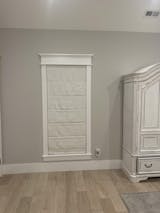


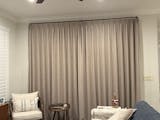
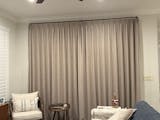
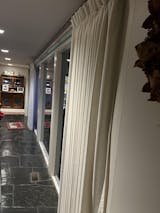












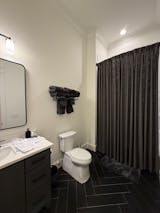


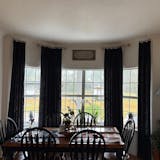


Leave a comment